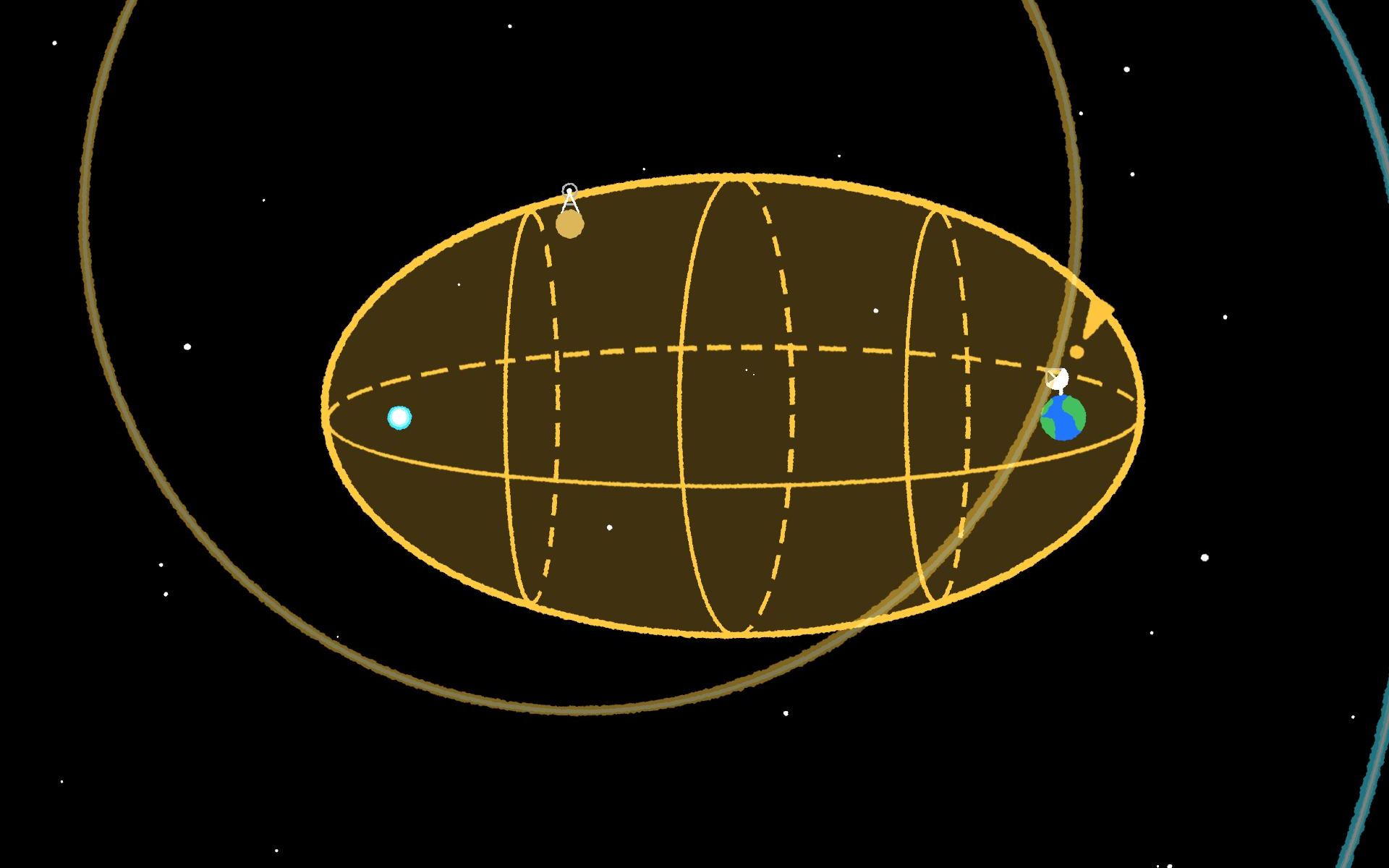Sometimes, the easy calculations are the most interesting. A recent paper from Balázs Bradák of Kobe University in Japan is a case in point. In it, he takes an admittedly simplistic approach but comes up with seven known exoplanets that could hold the key to the biggest question of them all – are we alone?
Continue reading “The Seven Most Intriguing Worlds to Search for Advanced Civilizations (So Far)”Starshot … Not? Get a Reality Check on the Search for Alien Civilizations

Fortunately, the real-world search for signs of extraterrestrial civilizations doesn’t have to deal with an alien armada like the one that’s on its way to Earth in “3 Body Problem,” the Netflix streaming series based on Chinese sci-fi author Cixin Liu’s award-winning novels. But the trajectory of the search can have almost as many twists and turns as a curvature-drive trip from the fictional San-Ti star system.
We Could Snoop on Extraterrestrial Communications Networks
The conditions for life throughout the Universe are so plentiful that it seems reasonable to presume there must be extra-terrestrial civilizations in the galaxy. But if that’s true, where are they? The Search for Extra-terrestrial Intelligence (SETI) program and others have long sought to find signals from these civilizations, but so far there has been nothing conclusive. Part of the challenge is that we don’t know what the nature of an alien signal might be. It’s a bit like finding a needle in a haystack when you don’t know what the needle looks like. Fortunately, any alien civilization would still be bound by the same physical laws we are, and we can use that to consider what might be possible. One way to better our odds of finding something would be to focus not on a direct signal from a single world, but the broader echos of an interstellar network of signals.
Continue reading “We Could Snoop on Extraterrestrial Communications Networks”The SETI Ellipse Tells Us Where to Search for Extraterrestrial Civilizations
Of all the questions that remain unanswered, the question of life in the Universe is surely the one that captures our attention the most. In a Universe whose observable edge is 46 billion light years away, is it even conceivable that we are alone, the sole planet among the millions and perhaps billions that are out there, where life has evolved, an oasis of life in the cosmic ocean. In the search for alien civilisations, researchers have proposed that it may be possible to use bright galactic events like supernovae to act as a focal point for civilisations to announce their presence!
Continue reading “The SETI Ellipse Tells Us Where to Search for Extraterrestrial Civilizations”Can Alien Civilizations Detect Humanity?

One of the fascinating things about being a human in this age is that we can do more than wonder about other life and other civilizations. We can actually look for them, although there are obvious limitations to our search. But what’s equally fascinating is that we can wonder if others can see us.
Continue reading “Can Alien Civilizations Detect Humanity?”China’s FAST Observatory is Playing a Key Role in the Search for Aliens
Some years ago I rememeber running the SETI at Home screensaver and would watch it for hours to see if any peaks appeared naively thinking they might be signals from an alien civilisation! There is no doubt that the search for extraterrestrials (ET) has captivated the minds of many people across the years. The search has of course to date, been unsuccesful despite multiple observations that seem to suggest the conditions for life across the cosmos may actually be more common than we first thought. Now Chinese agencies are funding projects to use the Five Hundred Meter Aperture Spherical Telescope (FAST) to conduct searches for alien signals.
Continue reading “China’s FAST Observatory is Playing a Key Role in the Search for Aliens”After all of This Time Searching for Aliens, is it The Zoo Hypothesis or Nothing?

In 1950, during a lunchtime conversation with colleagues at the Los Alamos National Laboratory, famed physicist Enrico Fermi asked the question that launched a hundred (or more) proposed resolutions. “Where is Everybody?” In short, given the age of the Universe (13.8 billion years), the fact that the Solar System has only existed for the past 4.5 billion years, and the fact that the ingredients for life are everywhere in abundance, why haven’t we found evidence of extraterrestrial intelligence by now? This came to be the basis of Fermi’s Paradox, which remains unresolved to this day.
Interest in Fermi’s question has been piqued in recent years thanks to the sheer number of “potentially habitable” exoplanets discovered in distant star systems. Despite that, all attempts to find signs of technological activity (“technosignatures”) have come up empty. In a recent study, a team of astrobiologists considered the possible resolutions and concluded that only two possibilities exist. Either extraterrestrial civilizations (ETCs) are incredibly rare (or non-existent), or they are deliberately avoiding contact with us (aka. the “Zoo Hypothesis“).
Continue reading “After all of This Time Searching for Aliens, is it The Zoo Hypothesis or Nothing?”Breakthrough Listen Scans Entire Galaxies for Signals From Extremely Advanced Civilizations
In 1960, Dr. Frank Drake led the first Search for Extraterrestrial Intelligence (SETI) experiment at the National Radio Astronomy Observatory in Green Bank, West Virginia. In the more than sixty years that have since passed, astronomers have conducted multiple surveys in search of technological activity (aka. technosignatures). To date, Breakthrough Listen is the most ambitious SETI experiment, combining data from the Robert C. Byrd Green Bank Telescope, the Parkes Murriyang Telescope, the Automated Planet Finder, and the MeerKAT Radio Telescope and advanced analytics.
The program includes a survey of the one million closest stars to Earth, the center of our galaxy and the entire galactic plane, and the 100 closest galaxies to ours. In a recent paper, members of Breakthrough Listen presented the results of their radio technosignature search of the centers of 97 nearby galaxies observed by the Robert C. Byrd Green Bank Telescope. This search was one of the largest and broadest
searches for radio evidence of extraterrestrial intelligence ever undertaken, surveying trillions of stars at four frequency bands. Unfortunately, no compelling candidates were found.
SETI Works Best When Telescopes Double-Check Each Other

The Search for Extraterrestrial Intelligence (SETI) has evolved considerably in the past sixty years since the first experiment was conducted. This was Project Ozma, which was conducted in 1960 by Dr. Frank Drake and his colleagues using the National Radio Astronomy Observatory (NRAO) in Green Bank, West Virginia. While the experiment did not reveal any radio signals from space, it established the foundation upon which all future SETI is based. Like Ozma, the vast majority of these experiments have searched for possible technosignatures in the radio spectrum.
Unfortunately, this search has always been plagued by the problem of radio interference from Earth-based radio antennas and satellites in orbit, which can potentially flood SETI surveys with false positives. In a recent study, an international team of astronomers (including researchers with Breakthrough Listen) recommended that future technosignature searches rely on multi-site simultaneous observations. This has the potential of eliminating interference from terrestrial sources and narrowing the search for extraterrestrial radio signals.
Continue reading “SETI Works Best When Telescopes Double-Check Each Other”Civilizations are Probably Spreading Quickly Through the Universe

The Search for Extraterrestrial Intelligence (SETI) has always been plagued by uncertainty. With only one habitable planet (Earth) and one technologically advanced civilization (humanity) as examples, scientists are still confined to theorizing where other intelligent life forms could be (and what they might be up to). Sixty years later, the answer to Fermi’s famous question (“Where is Everybody?”) remains unanswered. On the plus side, this presents us with many opportunities to hypothesize possible locations, activities, and technosignatures that future observations can test.
One possibility is that the growth of civilizations is limited by the laws of physics and the carrying capacity of the planetary environments – aka. The Percolation Theory Hypothesis. In a recent study, a team from the University of the Philippines Los Banos looked beyond traditional Percolation Theory to consider how civilizations might grow in three different types of Universes (static, dark energy-dominated, and matter-dominated). Their results indicate that, depending on the framework, intelligent life has a finite amount of time to populate the Universe and is likely to do so exponentially.
Continue reading “Civilizations are Probably Spreading Quickly Through the Universe”




